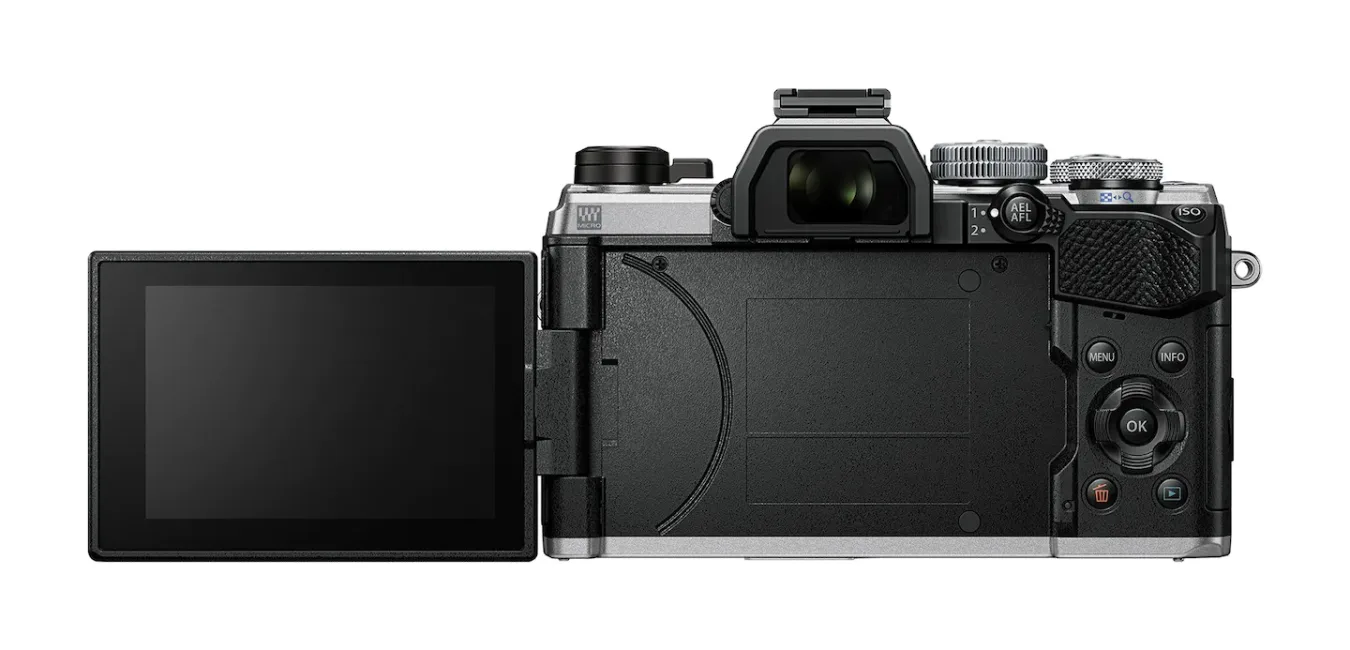OM System unveils the OM-5, its first camera without the Olympus name
OM System has launched its first camera that doesn’t carry the Olympus name, the $1,200 OM-5 — and it looks a lot like the Olympus OM-D E-M5 Mark III, other than a few tweaks. It has the same sensor and video specs, but wears a new weatherproof body and updated processor that delivers improved autofocus and other features.
Other than the new body, the OM-5 looks nigh-on identical to the past model. That’s not necessarily a bad thing, as the E-M5 III has good handling with a generous complement of mechanical controls in a relatively light body. But it’s also three years old, so a bigger grip would have been welcome, for instance. On the plus side, OM System has given it IP53 dustproof and splashproof protection, so you can use it in more extreme conditions.
It also carries the same 20.1-megapixel Micro Four Thirds sensor, 121-point hybrid phase and contrast-detect AF system and 2.36 million-dot electronic viewfinder. The rear 1.05 million dot fully articulating display, battery and single card slot are also identical to the last model. Shooting speeds match the previous model at 6fps/10fps in mechanical/electronic shutter modes with autofocus enabled — somewhat anemic compared to the competition.
OM System
However, the updated TruePic IX processor and better IBIS unit gives the OM-5 updated image processing, with image stabilization now up to 7.5 stops compared to 6.5 before. OM System also introduced a 50-megapixel handheld high-res shot mode, live ND mode and “Starry Sky” AF. Plus, you get improved face and eye detection for more distant subjects, but it lacks the new AI subject detection smarts of the OM-1.
On the video side, it still shoots 4K 30p video as before, but can now handle super-slow-mo 1080p at 120 fps. It also adds the OM-Log400 Profile for improved dynamic range. OM System got rid of the 30 minute recording limit, so you can now shoot video for as long as your card or battery will hold out.
Overall, it’s a pretty tame upgrade for a three-year-old camera and is in tough against rivals like Canon’s $960 EOS R10, which has a bigger sensor, better shooting speeds and superior video specs. Still, if you’re set on mid-range Micro Four Thirds camera, it arrives in November for $1,200 (body only) or $1,600 with the 12-45mm F4 PRO lens.
All products recommended by Engadget are selected by our editorial team, independent of our parent company. Some of our stories include affiliate links. If you buy something through one of these links, we may earn an affiliate commission. All prices are correct at the time of publishing.
OM System has launched its first camera that doesn’t carry the Olympus name, the $1,200 OM-5 — and it looks a lot like the Olympus OM-D E-M5 Mark III, other than a few tweaks. It has the same sensor and video specs, but wears a new weatherproof body and updated processor that delivers improved autofocus and other features.
Other than the new body, the OM-5 looks nigh-on identical to the past model. That’s not necessarily a bad thing, as the E-M5 III has good handling with a generous complement of mechanical controls in a relatively light body. But it’s also three years old, so a bigger grip would have been welcome, for instance. On the plus side, OM System has given it IP53 dustproof and splashproof protection, so you can use it in more extreme conditions.
It also carries the same 20.1-megapixel Micro Four Thirds sensor, 121-point hybrid phase and contrast-detect AF system and 2.36 million-dot electronic viewfinder. The rear 1.05 million dot fully articulating display, battery and single card slot are also identical to the last model. Shooting speeds match the previous model at 6fps/10fps in mechanical/electronic shutter modes with autofocus enabled — somewhat anemic compared to the competition.

OM System
However, the updated TruePic IX processor and better IBIS unit gives the OM-5 updated image processing, with image stabilization now up to 7.5 stops compared to 6.5 before. OM System also introduced a 50-megapixel handheld high-res shot mode, live ND mode and “Starry Sky” AF. Plus, you get improved face and eye detection for more distant subjects, but it lacks the new AI subject detection smarts of the OM-1.
On the video side, it still shoots 4K 30p video as before, but can now handle super-slow-mo 1080p at 120 fps. It also adds the OM-Log400 Profile for improved dynamic range. OM System got rid of the 30 minute recording limit, so you can now shoot video for as long as your card or battery will hold out.
Overall, it’s a pretty tame upgrade for a three-year-old camera and is in tough against rivals like Canon’s $960 EOS R10, which has a bigger sensor, better shooting speeds and superior video specs. Still, if you’re set on mid-range Micro Four Thirds camera, it arrives in November for $1,200 (body only) or $1,600 with the 12-45mm F4 PRO lens.
All products recommended by Engadget are selected by our editorial team, independent of our parent company. Some of our stories include affiliate links. If you buy something through one of these links, we may earn an affiliate commission. All prices are correct at the time of publishing.
